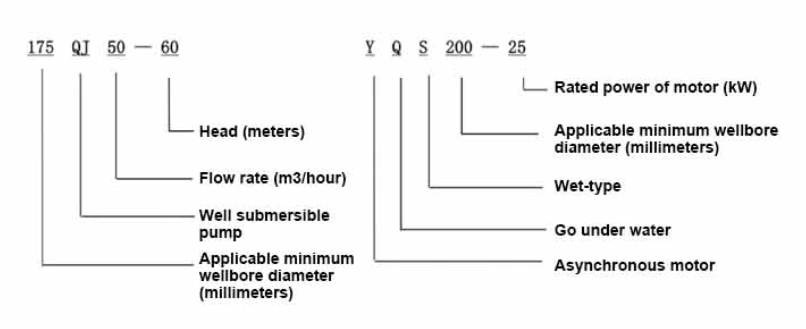Nov . 09, 2024 09:33 Back to list
Exploring Advancements in Submersible Electric Motors for Enhanced Underwater Applications
The Submersible Electric Motor A Deep Dive into Technology
Submersible electric motors are marvels of modern engineering, designed to operate underwater for various applications, including water pumping, waste treatment, and mining. These motors provide a reliable solution for tasks that require equipment to function effectively in submerged conditions. In this article, we will explore the principles, types, applications, and advantages of submersible electric motors.
Understanding Submersible Electric Motors
A submersible electric motor is a type of electric motor that is hermetically sealed to prevent water from entering. This feature ensures that the motor can remain submerged for extended periods without suffering damage from water infiltration. Typically, these motors are coupled with pumps to facilitate the movement of water or other fluids in harsh environments where conventional motors would fail.
The design of submersible motors revolves around their ability to operate underwater. They are usually constructed from corrosion-resistant materials like stainless steel or specialized alloys. The hermetic seal protects the motor components from moisture, which is crucial for ensuring durability and reliability.
Key Types of Submersible Electric Motors
1. Single Phase Submersible Motors These motors are used primarily in residential applications where power supply availability is limited. They tend to be smaller, making them suitable for lower-power needs.
2. Three Phase Submersible Motors Typically deployed in industrial and agricultural settings, these motors offer greater efficiency and power output. They can handle more extensive pumping operations and are more common in commercial installations.
3. Permanent Magnet Submersible Motors These motors utilize permanent magnets in their design, allowing for high efficiency and compactness. They are becoming increasingly popular in various applications due to their performance advantages.
Key Applications
Submersible electric motors find use in a wide range of industries and applications, including
1. Water Supply Systems Often deployed in boreholes, these motors pump groundwater to supply residential and agricultural needs. Their ability to operate at significant depths makes them indispensable in areas where surface water is insufficient.
submersible electric motor

2. Wastewater Treatment In sewage treatment plants, submersible motors are utilized to pump and aerate wastewater. This enhances the efficiency of biological processes and ensures effective waste management.
3. Mining Operations In mineral extraction processes, submersible motors help in dewatering mines, preventing flooding and maintaining operational safety.
4. Industrial Processes Submersible motors are used in various industrial applications, such as cooling systems, oil extraction, and chemical processing, where fluids need to be moved or mixed efficiently.
Advantages of Submersible Electric Motors
Submersible electric motors offer numerous benefits that make them a preferred choice for specific applications
1. Efficiency These motors are designed to be highly efficient, particularly in moving fluids. They can operate effectively at different depths and pressures, providing a reliable flow rate.
2. Space-Saving Design Their compact nature makes submersible motors easy to install in confined spaces. This space-saving advantage is especially useful in environments where surface-level installations are impractical.
3. Reduced Maintenance Because they are submerged, submersible motors are less exposed to environmental factors such as dust and debris. This leads to lower maintenance requirements compared to conventional motors placed above ground.
4. Versatility Their design allows them to be used in a wide range of situations, from domestic water supply systems to complex industrial processes. This versatility enhances their desirability across various sectors.
5. Improved Safety Submersible motors reduce the risks associated with high voltage and moving parts, as they operate below the surface and are generally safer in hazardous environments.
Conclusion
Submersible electric motors play a crucial role in various industries, providing efficient and reliable solutions for challenging underwater applications. As technology advances, the development of these motors continues to improve, leading to enhanced performance, energy efficiency, and durability. Their versatility and effectiveness underscore the importance of submersible electric motors in modern society's quest to harness and utilize water resources efficiently. Whether in residential, industrial, or agricultural settings, these motors are undoubtedly an integral part of our infrastructure.
-
Submersible Water Pump: The Efficient 'Power Pioneer' of the Underwater World
NewsJul.01,2025
-
Submersible Pond Pump: The Hidden Guardian of Water Landscape Ecology
NewsJul.01,2025
-
Stainless Well Pump: A Reliable and Durable Pumping Main Force
NewsJul.01,2025
-
Stainless Steel Submersible Pump: An Efficient and Versatile Tool for Underwater Operations
NewsJul.01,2025
-
Deep Well Submersible Pump: An Efficient 'Sucker' of Groundwater Sources
NewsJul.01,2025
-
Deep Water Well Pump: An Efficient 'Sucker' of Groundwater Sources
NewsJul.01,2025
-
 Submersible Water Pump: The Efficient 'Power Pioneer' of the Underwater WorldIn the field of hydraulic equipment, the Submersible Water Pump has become the core equipment for underwater operations and water resource transportation due to its unique design and excellent performance.Detail
Submersible Water Pump: The Efficient 'Power Pioneer' of the Underwater WorldIn the field of hydraulic equipment, the Submersible Water Pump has become the core equipment for underwater operations and water resource transportation due to its unique design and excellent performance.Detail -
 Submersible Pond Pump: The Hidden Guardian of Water Landscape EcologyIn courtyard landscapes, ecological ponds, and even small-scale water conservancy projects, there is a silent yet indispensable equipment - the Submersible Pond Pump.Detail
Submersible Pond Pump: The Hidden Guardian of Water Landscape EcologyIn courtyard landscapes, ecological ponds, and even small-scale water conservancy projects, there is a silent yet indispensable equipment - the Submersible Pond Pump.Detail -
 Stainless Well Pump: A Reliable and Durable Pumping Main ForceIn the field of water resource transportation, Stainless Well Pump has become the core equipment for various pumping scenarios with its excellent performance and reliable quality.Detail
Stainless Well Pump: A Reliable and Durable Pumping Main ForceIn the field of water resource transportation, Stainless Well Pump has become the core equipment for various pumping scenarios with its excellent performance and reliable quality.Detail
